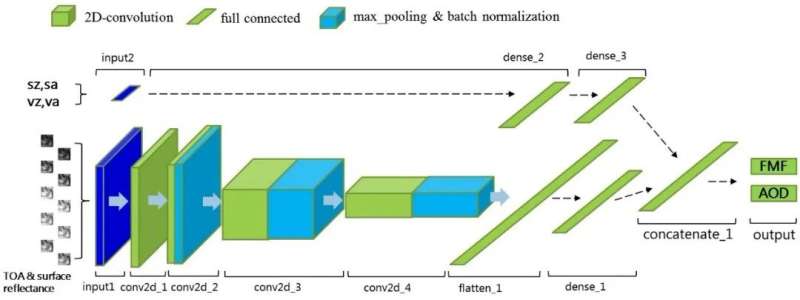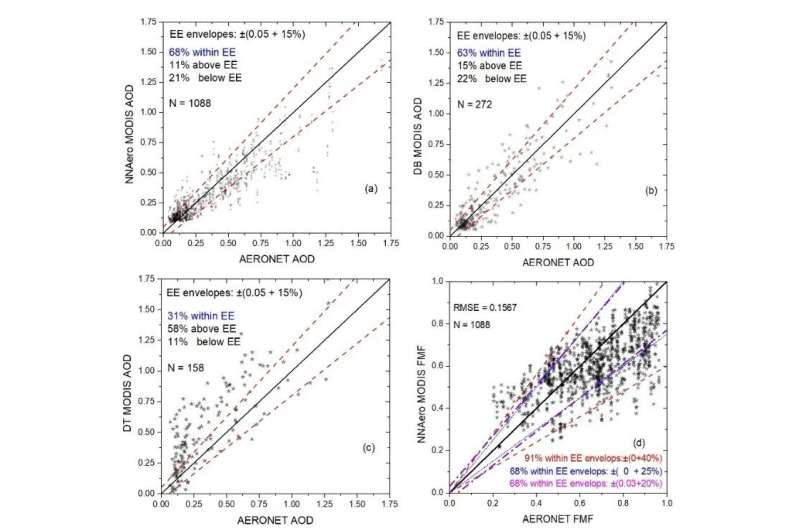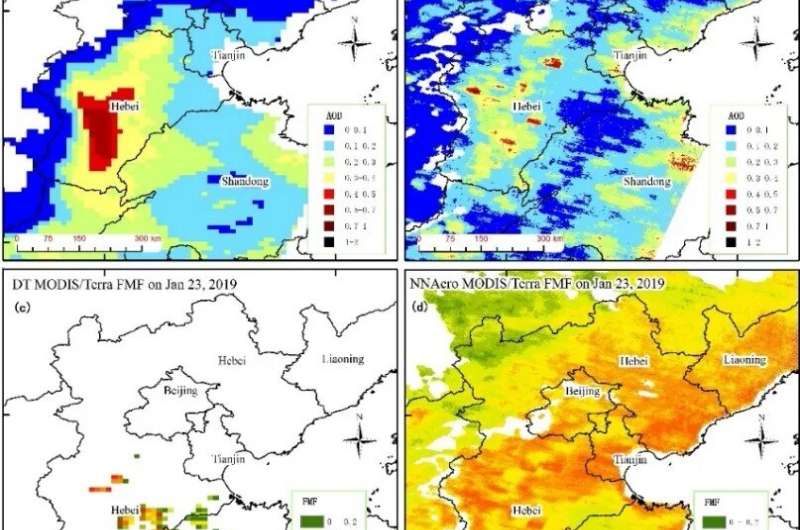Fig. 1 The multi-input neural network architecture of MODIS FMF and AOD prediction. Credit: AIR
Small particles known as aerosols suspended in the Earth's atmosphere can degrade visibility, affect human health and influence the climate.
Fine mode fraction (FMF), as a crucial parameter describing aerosol properties, can be used to distinguish human-caused and natural aerosol types. Aerosol optical depth (AOD) as a quantitative estimate of the aerosol amounts in the atmosphere, combined with FMF, can be used as a proxy for PM2.5, particulate matter with in situ aerodynamic diameters of smaller than 2.5 μm.
A research team led by Prof. LI Zhengqiang from the Aerospace Information Research Institute (AIR) of the Chinese Academy of Sciences (CAS) and their cooperators proposed an artificial neural network method for aerosol retrieval (NNAero) to jointly retrieve FMF and AOD derived from Moderate Resolution Imaging Spectroradiometer (MODIS) data. The research was published in Remote Sensing of Environment.
The technology of satellite remote sensing inversion to extract AOD information is relatively mature, while FMF inversion is more difficult. Therefore, in studies such as estimating PM2.5 through satellite remote sensing, there is a lack of key parameter to distinguish the size of aerosol particles. FMF over land is difficult to retrieve due to complex remote sensing mechanisms and lack of observation information.
Fig. 2 Accuracies of NNAero, Deep Blue and Dark Target algorithms validated using AERONET ground-based observations. Credit: AIR
In this study, scientists used the MODIS spectral reflectance of solar radiation at the top of the atmosphere and at the surface, together with ground-based Aerosol Robotic Network (AERONET) measurements of AOD and FMF, to train a Convolutional Neural Network (CNN) for the joint retrieval of FMF and AOD.
The NNAero results over northern and eastern China were validated against an independent reference AERONET dataset. The results showed that 68% of the NNAero AOD values were within the MODIS expected error envelope (EE) over land of ±(0.05 + 15%), which was similar to the results from the MODIS Deep Blue (DB) algorithm (63% within EE), and both were better than the Dark Target (DT) algorithm (31% within EE).
According to the study, the validation of the NNAero FMF versus AERONET data showed a significant improvement with respect to the DT FMF, with Root Mean Squared Prediction Errors (RMSE) of 0.1567 (NNAero) and 0.34 (DT). The NNAero method showed the potential of improved retrieval of the FMF.
Fig. 3 Image product examples to compare the DB AOD vs NNAero AOD (up) and DT FMF vs NNAero FMF (down). Credit: AIR
The neural network combines a fully connected neural network (FCNN) and a convolutional neural network (CNN) (Fig. 1). The retrieved FMF exhibits obvious accuracy promotion compared with previous studies (Fig. 2, 3).
The research results help provide basic remote sensing products supporting PM2.5 remote sensing and climate change research.
More information: Xingfeng Chen et al. Joint retrieval of the aerosol fine mode fraction and optical depth using MODIS spectral reflectance over northern and eastern China: Artificial neural network method, Remote Sensing of Environment (2020). DOI: 10.1016/j.rse.2020.112006
Provided by Chinese Academy of Sciences

























